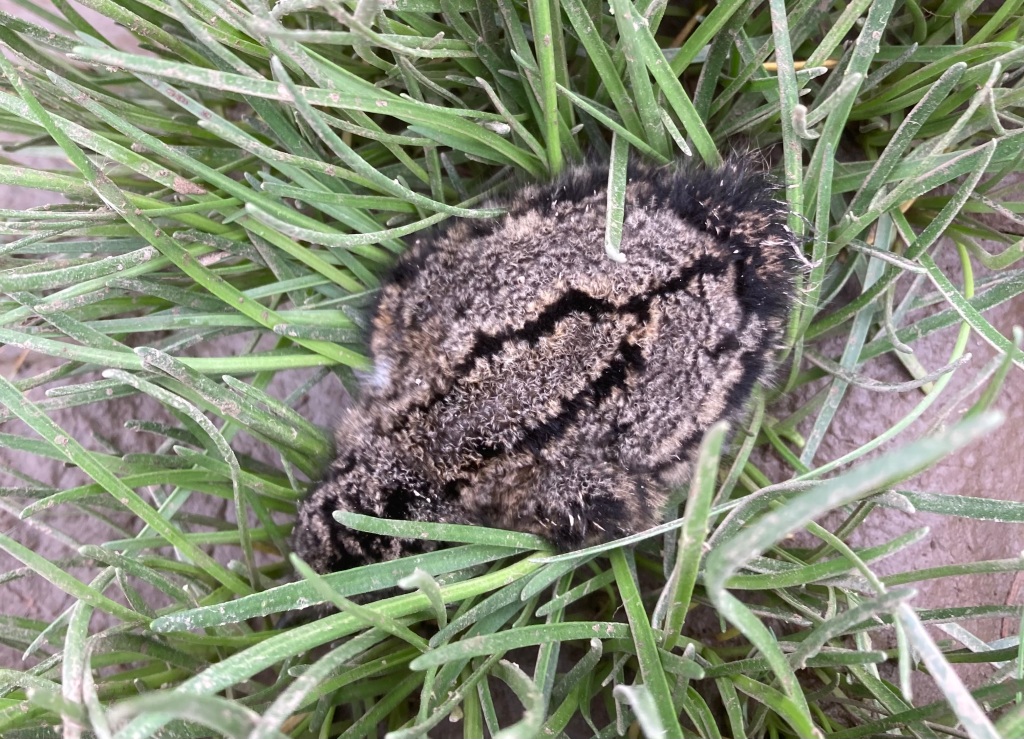
I planned to put a camera in the tree where the oystercatchers made their nest. I was curious to find out more about them, and it seemed like a fun project to run alongside a hundred other jobs in the spring. But by the time I got a ladder and batteries for my camera, several days had passed – and when I got to the tree, there was no sign of the adult birds. I climbed up and found the little scrape where the nest had been, but the birds and the eggs were gone.
Looking down onto the nest site for the first time, it’s worth noting that the oystercatchers had actively pecked and scraped a hole in the wood to improve its condition as a nest – you’d hardly call it burrowing or sculpting a hole, but they had certainly created a groove which was loosely filled with chips of spongy, half-rotten timber. This is the first time I’ve seen oystercatchers actually modifying a tree nest site to suit them, and other tree-nesters are usually just content to find a flat bit and go for it.
Even as I puzzled over the absence of these eggs, alarm calls began in the grass below me; adult birds which were suddenly panicked on the edge of the steep-sided estuary. My natural pessimism had suggested that the eggs were gone because they had been taken and eaten, but it was equally possible that they had hatched. Sure enough, down on the banks of a murky Solway creek, three little chicks were cowering for concealment in a stubble of sharp, rasping grass.
I stepped too close for a photograph and one of these chicks sprang up and ran away in a very confused and upright posture, calling noisily. This is very forthright, decisive behaviour for a young wader, and when I later examined photographs of the chicks, I saw that they still had their egg-teeth – a little white knuckle of calcium on the top of their beaks. These egg teeth are usually gone within forty eight hours of hatching, so it was even more remarkable that this chick should have got up and run away with such dexterity. I doubt a curlew or a redshank chick could have done the same at a similar age, and lapwings do little more than stumble and trip for their first few days.
It’s no great surprise that eggs which are laid high off the ground should stand a far greater chance of success – particularly where badgers are so often a primary cause of nest failure. But it’s also interesting that these chicks should have jumped down from safety so soon after hatching. It seems to be a common thread with oystercatchers which nest in trees and on fenceposts – the chicks come down to earth almost immediately. Compare this against chicks which nest on flat roofs and sheds; most of these youngsters will stay up there for several weeks until they’re big enough to fly.
This difference is probably down to the availability of space. If chicks can run and shriek at two days old with such energy and excitement, it’s very unlikely that they could be comfortably confined on a ledge in a tree that is no bigger than a dinnerplate. Given that their parents would have happily brought food up to them, they had no need to come down and forage. Perhaps they simply fell, but if there’s hope to be found in the success of eggs which hatch in the safety of a tree, these chicks may quickly find that life at ground-level amongst the badgers and foxes is not exactly a barrel of laughs.
Leave a comment